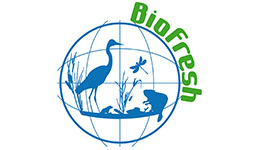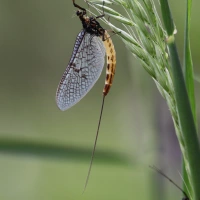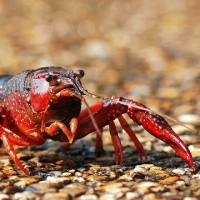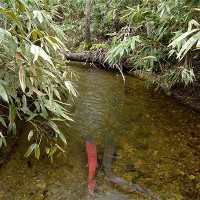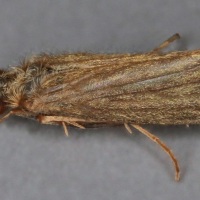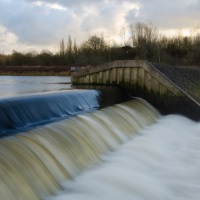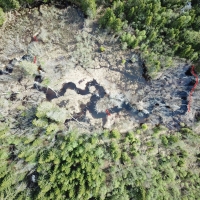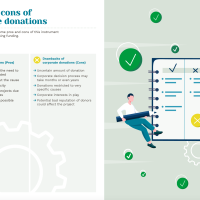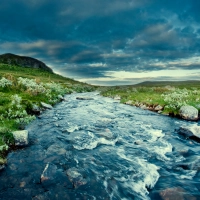A space for water in the Common Agricultural Policy

River Great Ouse in arable farmland. © Copyright Hugh Venables and licensed for reuse under this Creative Commons Licence
A recent European report suggests that attempts to promote freshwater ecosystem conservation in European agricultural policy have so far proved largely unsuccessful. The report, published in May 2014 by the European Court of Auditors (pdf), describes how priorities for freshwater ecosystem conservation outlined in the Water Framework Directive (WFD) have yet to be successfully integrated into the Common Agricultural Policy (CAP).
The Common Agricultural Policy and the Water Framework Directive are two key European policies shaping the form and function of the continent’s environment. Formed in 2000, the WFD requires countries to achieve ‘good status‘ for surface and groundwater by 2015 through a set of River Basin Management Plans (RBMPs).
The ‘status’ of water is assessed using four measures: biological (e.g. biodiversity); hydromorphological (e.g. river bank structure); physical-chemical (e.g. temperature and nutrient levels); and chemical (e.g. water pollutants). According to a 2012 European Environment Agency report, it is ‘not likely’ that Europe’s water will reach the goals set out by the WFD in 2015, in either water quality (e.g. owing to pollution) or quantity (e.g. owing to abstraction).
Agriculture is a key source of environmental stress on freshwaters. In Europe, it accounts for around 33% of total water use (e.g. for irrigation) and is the main source of nutrient pollution in water. Agricultural land surrounds many lakes and rivers and significantly influences the quality and quantity of water that reaches them. As a result, there are increasing calls across the continent to devise ways that agriculture can become more ‘water friendly’.

Pond in farmland, West Sussex. © Copyright Glyn Baker and licensed for reuse under this Creative Commons Licence
Introduced in 1962, the Common Agricultural Policy is the main policy influence on Europe’s agricultural land. There have been repeated calls by the Council of the European Union to better protect freshwaters from agricultural water pollution and abstraction through CAP as a means of helping reach the water management goals of the WFD. This cross-policy process has been put into action through two policy instruments: cross-compliance and rural development.
Cross-compliance is a CAP mechanism which ties direct payments to farmers to compliance with a set of rules based on maintaining agricultural land in good environmental condition. Examples include reducing the use of sewage sludge on farmland, and promoting buffer strips of vegetation at the edge of rivers and lakes. Non-compliance with these rules can lead to reduced CAP payments to farmers.
Rural development is shorthand for the European Agricultural Fund for Rural Development (EAFRD), which provides financial incentives for farmers voluntarily going beyond the requirements of legislation to promote biodiversity conservation on their land. Such voluntary actions might include wetland restoration, reduced pesticide use, the ‘naturalisation’ of drains and ditches or more extensive grazing regimes.
The European Court Audit, carried out between 2012-13, involved visits to catchments in seven European countries, an online survey of 140 farm advisory boards, and consultation with agricultural organisations, EC departments and the European Environment Agency. It concluded that cross-compliance and rural development mechanisms have only been ‘partially successful’ in bringing the concerns of European water policy into CAP.

Riparian zone close to Lake Erie, USA. Image: Wikipedia
A key point here is that CAP has the potential to provide significant financial incentives to farmers to sustainably manage water through these mechanisms. CAP accounts for around 40% of the total EU budget (€58.1 billion in 2012) – a significant amount of funding, which if these mechanisms proved successful could significantly help strengthen the goals of the unfunded WFD.
So why have the European Court of Auditors concluded that cross-compliance and rural development mechanisms in CAP have only been ‘partially successful’ in promoting freshwater ecosystem conservation on agricultural land?
First, it is argued that delays in the implementation of the WFD in Europe have held up its integration into CAP. Second, cross-compliance mechanisms currently have key weaknesses in protecting freshwaters. Most importantly, they do not currently include regulations on the use of phosphorous (which can cause algal blooms) and pesticide use in assessing environmentally friendly farming, and there is only a partial implementation of the scheme at farm level.
Third, requirements for cross-compliance vary widely between European countries, particularly in the requirements for riparian buffer strips and use of water in irrigation. Fourth, the potential of the rural development fund to reward farmers for voluntary environmental conservation is underused with regards to water, with water-related problems relating to agriculture not comprehensively identified and integrated into the scheme.
Fifth, the ‘polluter pays‘ principle doesn’t exist in the CAP payment scheme, meaning that penalties for polluting, administered through reduced cross-compliance payments, may not equal the cost of cleaning up the polluted habitat. Sixth, it is argued that monitoring networks for the effect of agriculture on freshwater ecosystems across Europe are incomplete and fragmented, and therefore agri-environment evaluation schemes under CAP are of limited value.
In short, there are numerous ways that water-related problems in Europe could be better brought into existing mechanisms within CAP to help promote the goals of the WFD and work towards healthy freshwater ecosystems.

Brook and farmland, Gloucestershire. © Copyright Philip Halling and licensed for reuse under this Creative Commons Licence
The Audit therefore gives three key recommendations. First, the existing cross-compliance and rural development mechanisms should be altered to better promote sustainable water use (e.g. by incorporating phosphorous and pesticides into cross-compliance).
Second, it recommends that the process of implementing the WFD across Europe is speeded up for the next management cycle (which begins in 2015) to give clear, concrete goals for the CAP mechanisms to follow.
Third, it is suggested that monitoring systems for understanding and evaluating the links between agricultural practices and water quality and quantity are improved across Europe to help target areas where CAP funds are most needed.
Finding ways to make agriculture more ‘water friendly’ is a key challenge for freshwater conservation. We’ll publish more posts over the coming weeks on the theme, profiling schemes such as the collaborative ‘Water Friendly Farming‘ project in the UK, which looks to understand the effect of different agricultural practices on our freshwaters.


